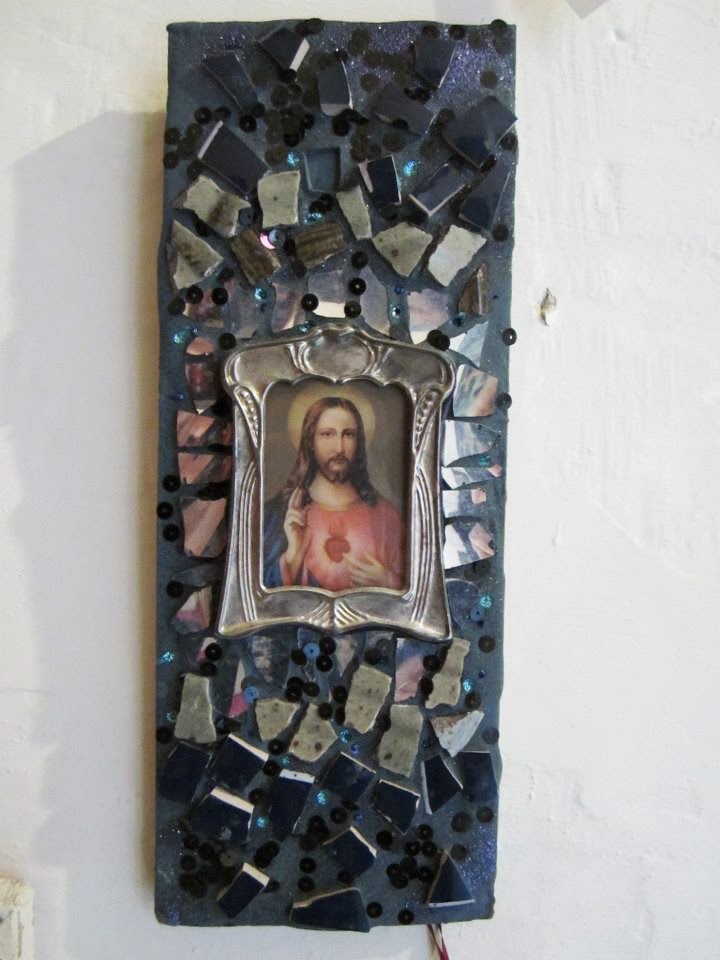Essay- Contemporary Artist
This
contemporary artist is a feminine artist, which she offers bold, vibrant
and expressive, and all her paintings are gorgeous bursts of colours that
will take you through all the canvas. The inspiration will be taking from
the natural world of creatures found in the sea and in the sky, such
as insects and birds. The viewer will be very involved when looking at this
type of art that this artist creates and will immediately feel life and
energy that will pop out from the artwork in what the artist describe her
work as "raw, organic colour palettes depicting elements
of movements."
Wingspan 2
All her
work focuses on the simplicity of form presented in a modern style, a
style in which she does layers of thick plaster together with undiluted oil
paints, in order to have an interesting textured surfaces. She also blends
beautiful colours together into strokes that reflects the repetitive forms of the
object being painted. Her work also draws attention to those very delicate
details and gives glorious details to the fragile creatures such as
butterflies.
She also
combined scale and perspective, making large things which normally will be
small and focus on colour, gesture and mark making. Bright and pure colours are
set in sharp contrast; light and dark, warm and cold combined with loose,
distinct brushstrokes were strongly used by the
impressionists’ artists. These marks creates a sense of movement energetic,
flickering quality that is particularly evident in her underwater scenes. She
is fascinated by sitting down in a studio and tries to capture the
dancer’s moves by sketching.
She is aware that a colour can be recognised by the mood, that it
will creates many emotions. Kandinsky was the artist that he explored the
connections between music and art, believing that musical and visual expression
could be used to complement each other. He realised that these two subjects are
very well connected and claimed that the colour is a power that influences the
soul, and in generally it is the most important and powerful part for every
artist, that he/she can experiment and explore different things to have good
and effective results.
Such theories seem to apply to Horkan’s work. She is not looking to produce an existing work that impose the feelings and emotions on the viewer. She decided to leave the viewer to create his/ her own feelings emotions and the way how they see the painting or artwork, and she will hope that she will bring joyful and happy emotions even when the viewer have a sad mood, by the different colours in the painting that automatically will change in different moods.
Her influences of her work was from the Impressionism period were the impressionist artists used small, thin, yet visible brush strokes, open compositions , emphasis on accurate parts of light in its changing qualities, ordinary subject matter, inclusion of movement as a crucial element of human perception and experience, and unusual visual angles.
Such theories seem to apply to Horkan’s work. She is not looking to produce an existing work that impose the feelings and emotions on the viewer. She decided to leave the viewer to create his/ her own feelings emotions and the way how they see the painting or artwork, and she will hope that she will bring joyful and happy emotions even when the viewer have a sad mood, by the different colours in the painting that automatically will change in different moods.
Her influences of her work was from the Impressionism period were the impressionist artists used small, thin, yet visible brush strokes, open compositions , emphasis on accurate parts of light in its changing qualities, ordinary subject matter, inclusion of movement as a crucial element of human perception and experience, and unusual visual angles.
The Secret Lives of Butterflies.
Flying Colours.
The Vibrant Depths of the sea.

Flying South
DegreeArt,2013.Meet the Artists. [online] Available at :http://www.degreeart.com/users/victoria-horkan [Accessed 14 April 2014].


























.jpg)











